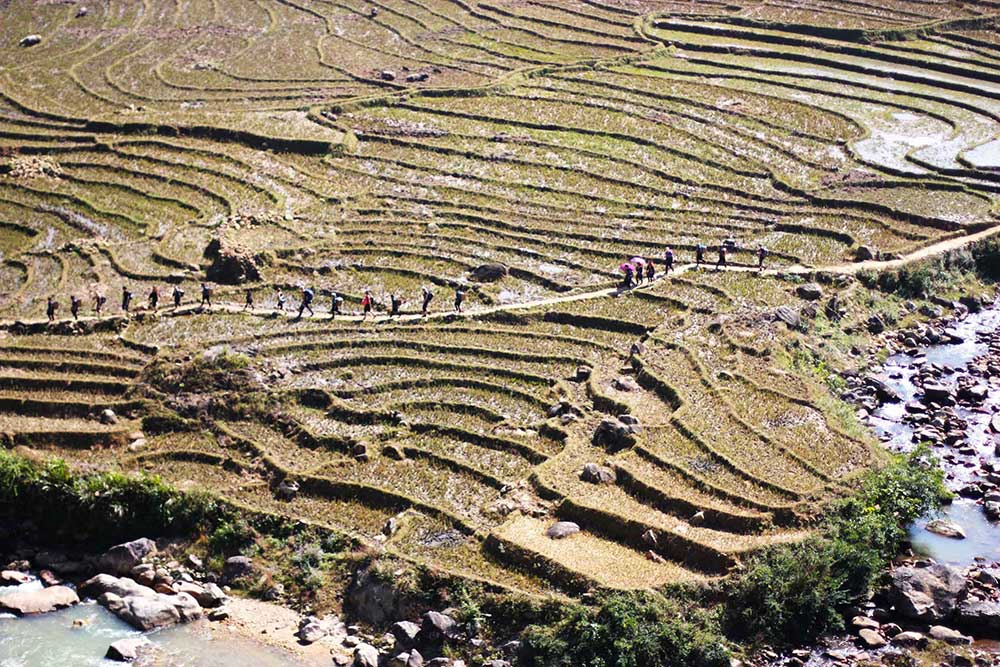


Vietnam, officially the Socialist Republic of Vietnam, is the easternmost country on the Indochina Peninsula in Southeast Asia. With an estimated 90.3 million inhabitants as of 2012, it is the world's 13th-most-populous country, and the eighth-most-populous Asian country. The name Vietnam translates as "Southern Viet"; it was first officially adopted in 1802 by Emperor Gia Long, and was adopted again in 1945 with the founding of the Democratic Republic of Vietnam under Ho Chi Minh. The country is bordered by China to the north, Laos to the northwest, Cambodia to the southwest, and the South China Sea to the east. Its capital city has been Hanoi since the reunification of North and South Vietnam in 1976.
The Hmong are an Asian ethnic group from the mountainous regions of China, Vietnam, Laos, and Thailand. Hmong are also one of the sub-groups of the Miao ethnicity in southern China. Hmong groups began a gradual southward migration in the 18th century due to political unrest and to find more arable land.
During the first and second Indochina Wars, France and the United States governments recruited thousands of Hmong people in Laos to fight against invading military forces from North Vietnam and communist Pathet Lao insurgents, known as the Secret War, during the Vietnam War and the Laotian Civil War. Hundreds of thousands of Hmong refugees fled to Thailand seeking political asylum. Thousands of these refugees have resettled in Western countries since the late 1970s, mostly the United States, but also in Australia, France, French Guiana, Canada, and South America. Others have returned to Laos under United Nations-sponsored repatriation programs.